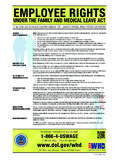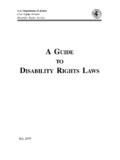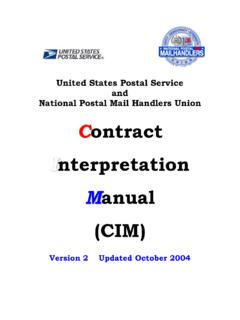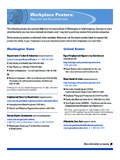Transcription of DEPARTMENT OF THE TREASURY THE UNITED …
1 DEPARTMENT OF THE TREASURYTECHNICAL EXPLANATION OF THE CONVENTION BETWEENTHE UNITED states OF AMERICAANDTHE SWISS CONFEDERATIONFOR THE AVOIDANCE OF DOUBLE TAXATION WITHRESPECT TO TAXES ON INCOMESIGNED AT WASHINGTON ON OCTOBER 2, 1996 ANDTHE PROTOCOLSIGNED AT WASHINGTON ON OCTOBER 2, 1996 GENERAL EFFECTIVE DATE UNDER ARTICLE 29: 1 JANUARY 1998 INTRODUCTIONThis is a technical explanation of the Convention between the UNITED states andSwitzerland and the Protocol signed on October 2, 1996 ("the Convention" and "the Protocol").References are made to the Convention between the UNITED states and Switzerland with Respectto Taxes on Income and Certain other Taxes, signed on May 24, 1951 ("the prior Convention").
2 The Convention replaces the prior took into account the TREASURY DEPARTMENT 's current tax treaty policy,the Model Income Tax Convention on Income and on Capital, published by the OECD in 1992and amended in 1994 and 1995 (the "OECD Model") and recent tax treaties concluded by bothcountries. References to the " Model" refer to the TREASURY DEPARTMENT 's Model IncomeTax Convention of September 20, 1996, which was issued after negotiation of the Conventionwas completed, although prior drafts of the Model were available and taken into account inthe course of connection with the negotiation of the Convention and the Protocol, the negotiatorsdeveloped and agreed upon a Memorandum of Understanding.
3 The Memorandum ofUnderstanding is a statement of intent setting forth a common understanding and interpretationof certain provisions of the Convention reached by the delegations of the Swiss Confederationand the UNITED states acting on behalf of their respective governments. These understandings andinterpretations are intended to give guidance both to the taxpayers and the tax authorities of bothContracting states in interpreting the relevant provisions of the the discussions of each Article in this explanation, the relevant portions of the Protocoland Memorandum of Understanding are Technical Explanation is an official guide to the Convention and Protocol.
4 It reflectsthe policies behind particular Convention provisions, as well as understandings reached withrespect to the application and interpretation of the Convention and Protocol. This technicalexplanation has been provided to Switzerland. References in the technical explanation to "he" or"his" should be read to mean "he or she" or "his or her."TABLE OF ARTICLESA rticle 1-------------------------------- Personal ScopeArticle 2-------------------------------- Taxes CoveredArticle 3-------------------------------- General DefinitionsArticle 4-------------------------------- ResidentArticle 5-------------------------------- Permanent EstablishmentArticle 6-------------------------------- Income from Real PropertyArticle 7-------------------------------- Business ProfitsArticle 8-------------------------------- Shipping and Air TransportArticle
5 9---------------------------------Associ ated EnterprisesArticle 10-------------------------------Dividen dsArticle 11 ------------------------------ InterestArticle 12-------------------------------Royalti esArticle 13-------------------------------GainsAr ticle 14-------------------------------Indepen dent Personal ServicesArticle 15-------------------------------Depende nt Personal ServicesArticle 16-------------------------------Directo r s 17-------------------------------Artiste s and SportsmenArticle 18-------------------------------Pension s and AnnuitiesArticle 19-------------------------------Governm ent Service and Social SecurityArticle 20-------------------------------Student s and TraineesArticle 21 ------------------------------Other IncomeArticle 22-------------------------------Limitat ion on BenefitsArticle 23-------------------------------Relief from Double Taxation Article 24-------------------------------Non-Dis criminationArticle 25-------------------------------Mutual Agreement ProcedureArticle
6 26-------------------------------Exchang e of InformationArticle 27 ------------------------------Members of Diplomatic Missions and Consular PostsArticle 28 ------------------------------Miscellane ousArticle 29-------------------------------Entry into ForceArticle 30-------------------------------Termina tionARTICLE 1 Personal ScopeParagraph 1 Paragraph 1 of Article 1 provides that the Convention applies to residents of the UnitedStates or Switzerland except where the terms of the Convention provide otherwise. Under Article4 (Resident) a person generally is treated as a resident of a Contracting State if that person is,under the laws of that State, liable to tax therein by reason of his domicile, residence or othersimilar criteria.
7 If, however, a person is considered a resident of both Contracting states , a singleState of residence (or no State of residence) is assigned under Article 4. This definition governsfor all provisions of the provisions are applicable to persons who may not be residents of eitherContracting State. For example, Article 19 (Government Service) may apply to an employee of aContracting State who is resident in neither State. Paragraph 1 of Article 24 (Non-Discrimination) applies to nationals of the Contracting states , irrespective of their Article 26 (Exchange of Information and Administrative Assistance), information may beexchanged with respect to residents of third states in certain 2 Paragraph 2 contains the traditional saving clause found in tax treaties, andparagraphs 3(a) and (b) contain the exceptions to the saving clause.
8 The UNITED states reservesits right, except as provided in paragraph 3, to tax residents and citizens (including itsformer citizens) as provided in its internal law, notwithstanding any provisions of the Conventionto the contrary. For example, if a resident of Switzerland performs independent personal servicesin the UNITED states and the income from the services is not attributable to a fixed base in theUnited states , Article 14 (Independent Personal Services) would by its terms prevent the UnitedStates from taxing the income. If, however, the Swiss resident is also a citizen of the UnitedStates, the saving clause permits the UNITED states to include the remuneration in the worldwideincome of the citizen and subject it to tax under the normal Internal Revenue Code ( Code )rules ( , without regard to Code section 894(a)).
9 For special foreign tax credit rules applicableto the taxation of certain income of its citizens resident in Switzerland, see paragraph 3of Article 23 (Relief from Double Taxation).In many treaties the saving clause is reciprocal. Swiss tax policy does not call forsuch treatment, so the provision was made unilateral, affecting only taxing purposes of the saving clause, "residence" is determined under Article 4 (Resident).Thus, if an individual who is not a citizen is a resident of the UNITED states under the Code,and is also a resident of Switzerland under Swiss law, and that individual has a permanent homeavailable to him in Switzerland and not in the UNITED states , he would be treated as a resident ofSwitzerland under Article 4 and for purposes of the saving clause.
10 The UNITED states would notbe permitted to apply its statutory rules to that person if they are inconsistent with theConvention. Thus, an individual who is a resident under the Code but who is deemed to be aresident of Switzerland under the tie-breaker rules of Article 4 would be subject to tax onlyto the extent permitted by the Convention. However, the person would be treated as a for tax purposes other than determining the individual's tax liability. Forexample, in determining under Code section 957 whether a foreign corporation is a controlledforeign corporation, shares in that corporation held by the individual would be considered to beheld by a resident.















